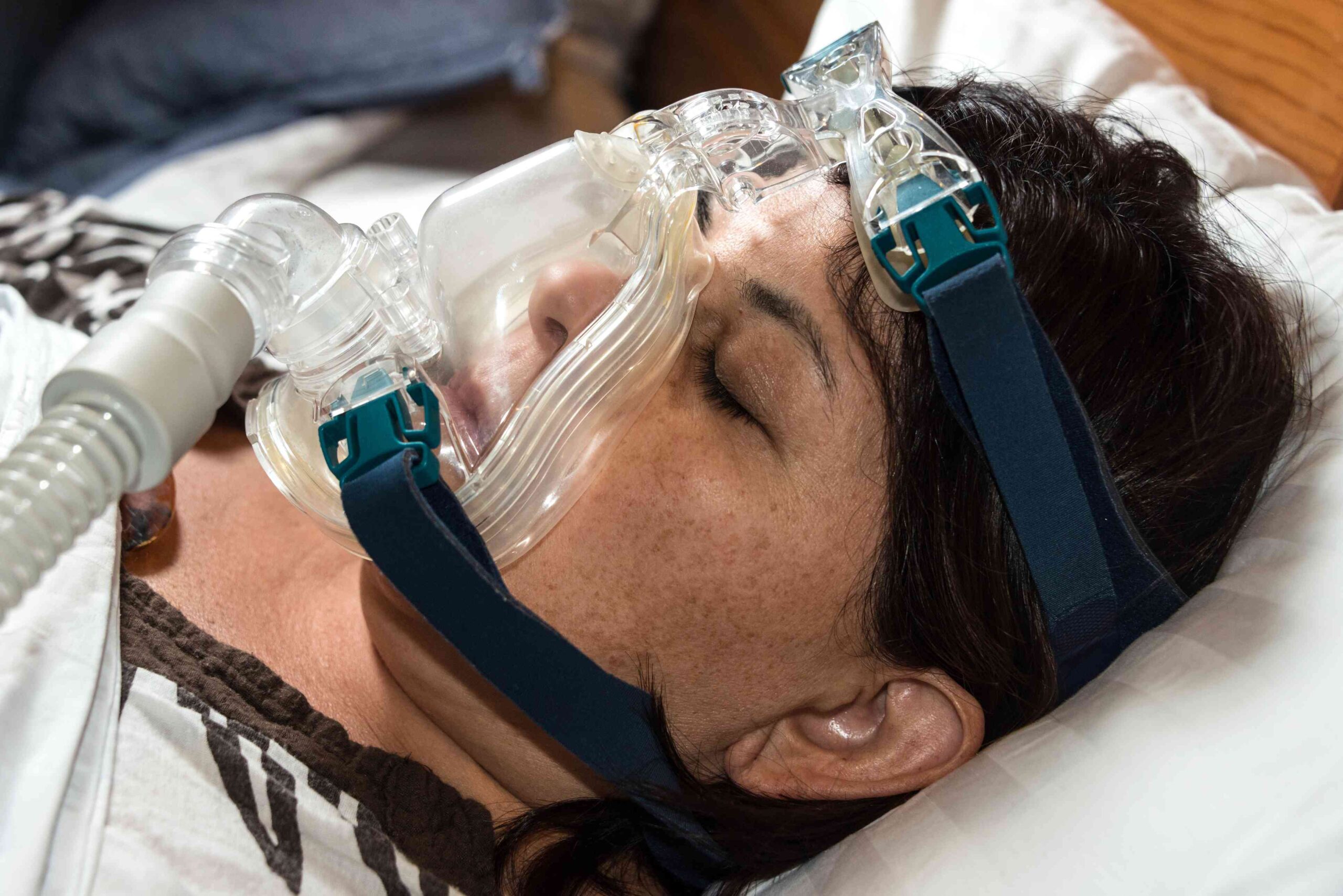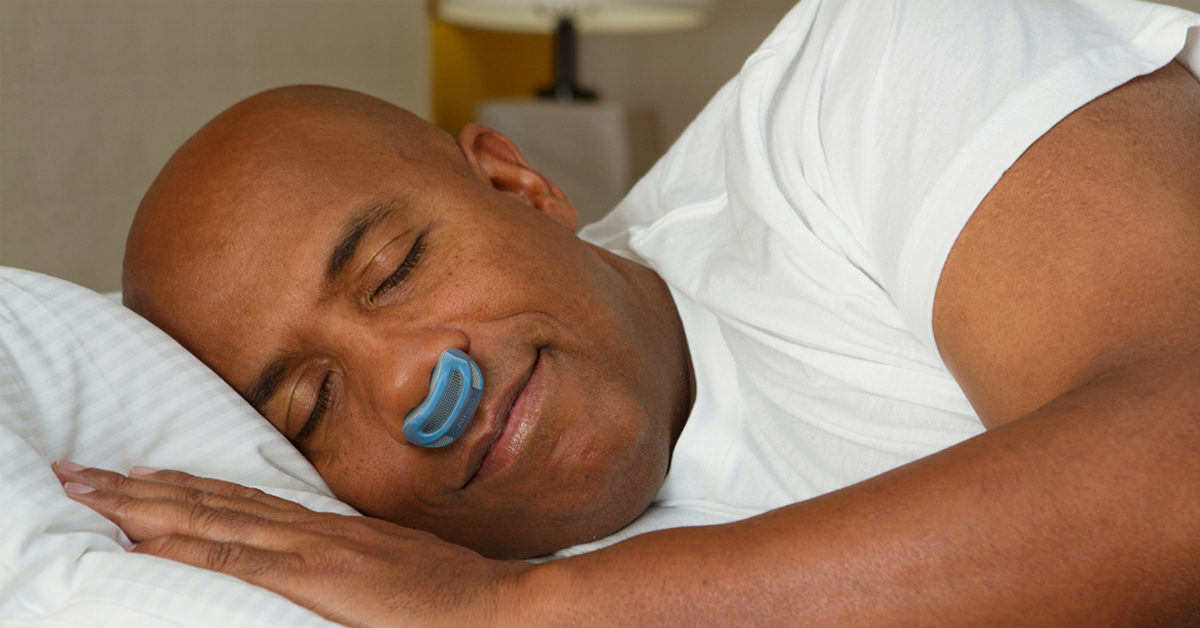
The habit of snoring can occur due to the anatomy of the respiratory tract in the throat, breathing problems or sleep disturbances. Although generally harmless, snoring can disturb other people or reduce sleep quality. Snoring due to obstructive sleep apnea can stop breathing. Continuous positive airway pressure (CPAP) therapy is one way to overcome this habit.
What is the procedure for implementing the therapy? Check out the full explanation below.
What is CPAP?
Continuous positive airway pressure (CPAP) is the primary treatment of sleep snoring due to obstructive sleep apnea (OSA). She was snoring loudly and having trouble breathing while sleeping is a sign of this disease, a severe sleep disorder.
OSA can cause the airways to partially or wholly close during sleep, blocking airflow. When completely closed, OSA sufferers may experience respiratory arrest during sleep. Well, CPAP is a device that provides air pressure through a mask placed over the nose and mouth while sleeping.
According to the Sleep Foundation, CPAP constantly exerts positive pressure on the upper airway. That way, the airway in the throat remains open during sleep, which can maintain the air volume in the lungs.
In short, using CPAP facilitates breathing during sleep and can distribute oxygen properly throughout the body. As a result, you can avoid snoring disorders that can be life-threatening.
Stop snoring through CPAP can also solve OSA sufferers with snoring symptoms that don’t go away even after surgical operations, such as tonsillectomy (tonsillectomy) or adenoidectomy (adenoid surgery).
Many worries that applying positive pressure to the airways can cause the lungs to burst. But don’t worry; CPAP can adjust the body’s pressure to keep the airway open.
Who needs CPAP therapy?
CPAP therapy procedures are effective in treating symptoms of OSA and sleep apnea. However, not all patients with this condition respond positively to CPAP therapy treatment. Therefore, it is essential to consult your doctor about whether this therapy will effectively treat your disease.
In addition, several conditions may be of concern to you if you want to undergo CPAP therapy, considering that this therapy can be contraindicated with the following conditions:
- Patients who cannot cooperate because they have an anxiety disorder.
- Patients lose consciousness to the point where they cannot maintain their airways.
- People who are experiencing respiratory failure.
- Patients who have trauma related to the face.
- People who have had surgery on the front, oesophagus, or intestines.
- Patients who efficiently expel fluid through the respiratory tract.
- People who have experienced acute nausea and vomiting.
- Patients with hypercarbic asthma or chronic obstructive pulmonary disease (COPD).
Therefore, you must be careful before undergoing CPAP therapy to treat this condition. Instead, do not choose this therapy if the doctor does not recommend it.
Preparation before undergoing CPAP therapy
Before finally using a CPAP machine for therapy, there are some preparations you need to make. Here are the preparatory steps before using the CPAP tool:

1. Put the tool in the right place
The first step is to put the CPAP tool in the right place. Here are some criteria for a suitable place to put this object:
- It has a flat surface and is wide enough to safely place the CPAP device on its top.
- Close enough to the bed so the hose from the appliance can reach the top of the mattress.
- Make sure there is a power outlet close enough to the machine to make it easy to plug the power plug from this machine.
- It’s easy to start the engine, open the filter compartment, and add water to the humidifier.
You can add a small table next to the bed to place the machine on its top surface.
2. Checking the filter on the CPAP device
If you use a CPAP machine, you’ll notice that it also has filters. However, the type of filter also depends on the CPAP machine.
The filter on the CPAP machine is contained in a small compartment that you can easily find on this tool. The instructions on the device or the one your doctor gives you will thoroughly explain what you should do with the filter every time you use the tool.
3. Attach the hose to the CPAP machine and the mask
If you want to sleep, attach the hose to the CPAP machine. Of course, there is a special place that you can easily find to connect this hose to the machine. You don’t have to put much effort into attaching the hose to the appliance.
Later, you will also connect the other end of this hose to the mask. You will use the front while sleeping to help overcome this condition.
4. Set up a humidifier (if available)
Several types of CPAP are equipped with a humidifier to help you humidify the air. The goal is to dry the mouth and throat at night. If your CPAP device already has a humidifier, fill it with clean, boiled water.
Pay attention to the amount of water you can put in the humidifier. Avoid exceeding the maximum limit on the humidifier because excess moisture can enter the hose. If this happens, it will undoubtedly interfere with the CPAP procedure later.
5. Install the CPAP machine on the socket
You can start the CPAP machine once the hose is attached to the machine and the mask. Make sure that the appliance is connected to the mains correctly and adequately.
It is also essential to avoid equipment damage related to technical problems. Besides, you will feel safer using it.
The procedure for carrying out therapy using a CPAP machine
After preparing the device properly, here is the procedure for using the CPAP machine for therapy:

1. Use and adjust the mask on the face
Now, it’s time to attach a mask connected to the machine via a hose on your face. There are several types of shows that you can use with a CPAP machine for this therapy. Some masks cover the nose and mouth, but some only cover the nose and bottom.
Usually, the doctor will help recommend the type of mask that suits your needs. The doctor can select shows based on how you breathe while sleeping, the pressure needed, and the position you sleep in every night.
However, whatever mask you use later, the cover will accompany a hook so that the show does not change position while you sleep. You will use the hook strap to the back of your head.
When using a mask, you must ensure the show is attached correctly. Even though it has to cover the face, it doesn’t mean the front has to press the skin. If it’s still uncomfortable, position the mask until it feels comfortable for you to use during sleep.
2. Turn on the CPAP machine for start-up
You can start the CPAP machine when the mask is in the right and comfortable position. The pressure setting on the CPAP machine should have been set by the doctor or medical professional who helps treat your condition. This means you need to turn it on without messing with it first.
When the CPAP machine is on, you will notice the presence of air from the mask. However, if you feel that air is coming out of the cover, you may need to readjust the surface position.
When you use this tool, you can start with the lowest air pressure first and slowly increase to the stress your doctor recommends. However, you can also use it with air pressure that is already large, according to the doctor’s recommendations.
3. Find a comfortable sleeping position
When using a CPAP machine as part of therapy to treat this condition, it’s best to find the most comfortable sleeping position. Try several sleeping positions first to find out which place is the most comfortable when you have to sleep using this tool.
Ensure your sleeping position doesn’t interfere with wearing the mask, doesn’t hold the air hose that connects the cover to the machine, and doesn’t put too much pressure on the face.
It may take a long time to finally feel comfortable sleeping using this machine. However, if you are still uncomfortable using it, try consulting your doctor again. They may be able to help you find the best solution for the condition.
Possible side effects of CPAP therapy
The use of this CPAP tool can cause side effects, including:
- Constantly dreaming during initial use.
- Dry nose and sore throat.
- Runny nose and constant sneezing.
- Irritation to eyes and skin around mask area.
- Bloated.
- Nosebleeds (rare side effect).
You may feel mild morning discomfort when you first use CPAP. Talk to your doctor if you feel pain after a few days of using the appliance.
You can continue treatment if you experience side effects if they don’t bother you too much. You need to apply the following tips if you experience side effects.
If you have a cold, talk to your doctor about using a decongestant or corticosteroid nasal spray.
Use a moisturizer or corticosteroid nasal spray to reduce irritation and nasal drainage.
Things you need to pay attention to while undergoing CPAP therapy
This therapy is said to be more effective in overcoming sleep apnea symptoms than other non-surgical methods. The following are signs that indicate that you are successfully undergoing therapy to breathe better while sleeping.
You can sleep according to your needs, sleeping 7-8 hours daily.
No longer sleepy during the day, no sudden awakenings at night, or in a good mood when you wake up in the morning.
Doctors’ examinations show a reduced risk of heart disease because it can help lower blood pressure both during the day and at night.
It may take some time for you to become comfortable using CPAP. So, don’t give up on applying this therapy several times until you can feel the results of the treatment.
Next, the thing that needs to be considered is lifestyle changes. Relying solely on CPAP to treat sleep apnea without making lifestyle changes will not completely work.
You need to lose excess weight. The reason is weight gain can cause extra fat around the neck to narrow the airway. Therefore, ask your doctor what the ideal weight you should achieve is.
Try to exercise regularly, at least 30 minutes per day. Then, improve your diet by limiting foods high in sugar and fat and rearranging meal times. Avoid drinking alcohol before bed, and it’s best to stop taking sleeping pills.
To be more effective, stop smoking by slowly reducing the number of cigarettes. Position sleeping on your side or stomach; avoid sleeping on your back. To be more comfortable, use a comfortable and appropriate sleeping pillow.



